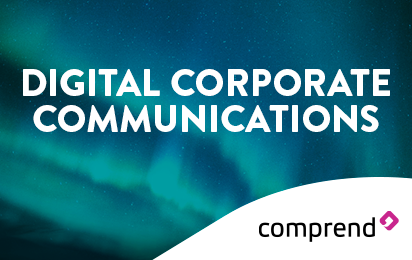
INSIGHTS: USE STORYTELLING TO BUILD AN AUTHENTIC EMPLOYER BRAND
At the Employer Brand Management conference 2019 on 4 December, Pathmotion will share its insights into best practice in employer branding
Storytelling works. It's a powerful tool to help persuade, drive empathy, and lead people into action, and we've seen it work in a number of different industries. It’s so effective that a quick search for ‘storytelling for brands agencies’ returns thousands of businesses whose main service is developing stories that drive sales, subscriptions, and donations.
Stories work for a number of reasons. Stories get our attention by engaging our empathy. They’re better remembered than facts alone. Affinity toward characters in a story is carried through to the brand. Narrative arcs trigger emotions, which drive decisions. A story allows the reader to arrive at the conclusion themselves, which is more persuasive than giving it to them.
With the help of Immersion Neuroscience, neuroeconomist and leading figure in storytelling, Paul Zak, and multinational banking organisation, Citi, we conducted the first ever research to show that storytelling works in employer branding and to attract talent. Here are some of the key findings.
Immersion is a leading indicator of positive outcomes (desired action taken) from an experience. It’s measured second-by-second using an intuitive 0-10 scale called the ‘Immersion Quotient.’
Key algorithm: attention + emotional resonance = immersion
Attention increases activity in the brain’s prefrontal cortex, which causes an increase in heart rate. Emotional resonance is associated with the brain’s synthesis of the neurochemical oxytocin, which increases activity of the vagus nerve. A high immersion quotient predicts that the person is likely to take the desired action.
For this study, we measured candidates’ immersion levels while they were browsing the Citi corporate careers site, while they were browsing the Citi careers discussion platform (featuring employee stories), and while participating in a real-time exchange with Citi employees. You can read more about how the study was conducted in our ebook.
Other findings include: Corporate careers sites are not immersive, but employee stories are. Employee stories are 20% more likely to convert than a corporate careers site. Real-time engagement with employees is the most immersive approach.
Not all stories are persuasive. Think, for example, about the generic ‘talking heads’ style of employee testimonial videos that companies publish. They tend to cover the same handful of broad topics, and some might be useful, but what evidence do we have that these convince candidates to apply? There is a better approach.
There are five key factors to a persuasive story: narrative, authenticity, attention to detail, a meaningful challenge and practical tips for the reader. In order to create the kinds of stories that candidates will be persuaded by, it’s important to ensure that you hit all the right notes.
Cover a sufficient range of topics: candidates are interested in more than what your office looks like and what the benefits are; corporate sites often lack sufficient information to answer their questions. Employee stories are a great way to add a more personal, individual approach to covering the topics that candidates care about.
Employees are the most trusted people in your organisation to tell stories, and they’re best-placed to talk about the topics your candidates will be most interested in. Furthermore, the most immersive approach was direct, real-time engagement between employees and candidates.
David Rivel and Alon Laniado is the co-founder of Pathmotion
Tickets for the conference are still available here.


